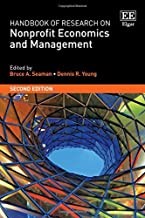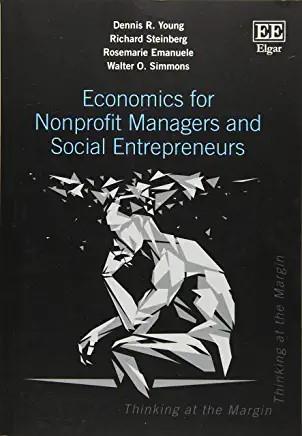News and Notes as of January 1, 2021
Top fundraising trends to capitalize on in 2021
Prediction 1: virtual fundraising is here to stay. Read more
Report: Giving rose 7.6% during first 3 quarters of 2020
Charitable giving increased by 7.6% during the first nine months of 2020, compared with the year before, according to the Fundraising Effectiveness Project. “What we’re seeing is that people remain very generous and continue to support their neighbors, communities and charitable causes when they face crises and hard times,” said FEP chair Jon Biedermann.
Full Story here
Donor retention: Where to begin
You need to hang onto your donors for true fundraising success. Try dating them. Seriously. Read more
What key trends will affect nonprofits the most this year?

Technology, online giving and socioeconomic factors are a few of the trends reshaping the nonprofit sector, writes Una Osili of the Indiana University Lilly Family School of Philanthropy. “Looking to chart a ‘new normal,’ nonprofits can move boldly towards a shared vision of a more just, equitable, and resilient future,” Osili writes.
Full Story: The NonProfit Times
Nonprofit Board Orientation Checklist
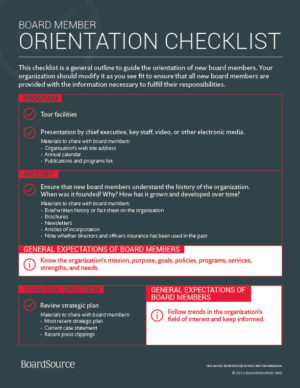
Ensure you are providing new board members with the necessary materials and information during the orientation process. Based on information from The Board Building Cycle and Ten Basic Responsibilities of Nonprofit Boards, this nonprofit board orientation checklist includes important information such as:
- materials to share with new board members
- general expectations of board members
- an outline of the information to provide new board members about the organization
Read more.
Report: Giving rose 7.6% during first 3 quarters of 2020
Charitable giving increased by 7.6% during the first nine months of 2020, compared with the year before, according to the Fundraising Effectiveness Project. “What we’re seeing is that people remain very generous and continue to support their neighbors, communities and charitable causes when they face crises and hard times,” said FEP chair Jon Biedermann.
Full Story here
News and Notes as of December 1, 2020
Opinion: Nonprofit partnerships empower sector

Nonprofits have worked together to share resources and meet the needs of their communities during the pandemic and must continue to do so, writes Ruth Jones Nichols, president and CEO of the Foodbank of Southeastern Virginia and the Eastern Shore. “Partnerships during a pandemic can have a positive impact on the people we serve, and they can also have an enduring effect on our sector by helping nonprofits survive,” she writes.
Full Story: Inside Business (Hampton Roads, Va.) (11/23)
————————————————————————————————————————————-
What makes a good board member?
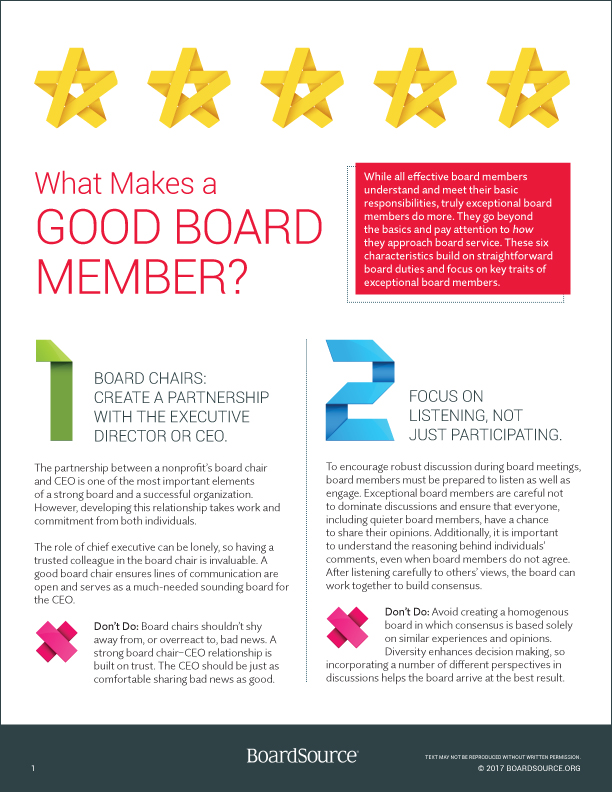
While all effective board members understand and meet their basic responsibilities, truly exceptional board members do more. In addition to highlighting important behaviors to avoid, this resource outlines six characteristics of good board members, including
⦁ focus on listening
⦁ ask naïve questions
⦁ serve as ambassadors for the organization
Read more
————————————————————————————————————————————-
How to provide immediate relief in times of crisis

The Medtronic Foundation worked with corporate and philanthropic partners to identify nonprofits in need and outcome-based actions the organization could take when the pandemic and racial unrest converged, write Allison Frailich and Liz Lund of the Medtronic Foundation. The authors share six actions for effective crisis response, including being clear and direct in messaging.
Full Story: Stanford Social Innovation Review
————————————————————————————————————————————-

2 Fundraising Appeal Examples: Include Relevancy and Urgency – Here’s an evaluation of two fundraising appeal examples I received in just one day’s mail. I chose them because they’re similar, yet different.
Read more >> from Claire Axelrad, J.D., CFRE
————————————————————————————————————————————-
Putting the Thank You Before the Next Please: How-To Spotlight Nonprofit Supporters in a Meaningful Way – The longevity of any non-profit’s contributions (time, treasure, talent, or otherwise) will depend, in part, on saying a regular thank you before the next please.
Read more >> from Madison Gonzalez
————————————————————————————————————————————-
[VIDEO] 7 Steps to Getting Grant Funding – In this webinar replay, Margit Brazda Poirier, GPC, M.S. will share the exact seven steps that helped her raise over $20MM in grant funding for her clients so that you can do it too!
Watch now >>
————————————————————————————————————————————-
3 Challenges That Stop Development Directors from Pursuing Major Gifts – I understand that getting serious about pursuing major gifts can feel risky. It’s something a lot of nonprofit folks aren’t trained in and can seem intimidating. But you can do it!
Read more >> from Sherry Quam Taylor
News and Notes as of November 1, 2020
5 Phases of Strategic Planning
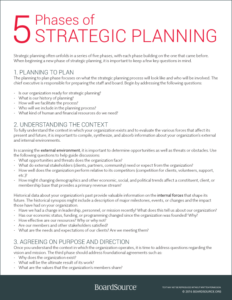
Strategic planning often unfolds in a series of five phases, with each phase building on the one that came before.
When beginning a new phase of strategic planning, it is important to keep a few key questions in mind. This resource includes the five steps to employ while strategic planning, from planning to plan to monitoring your progress. Members only. Read more.
3 types of ineffective nonprofit boards and what to do
Healthy boards have a unique ability to advance their organizations’ mission-related goals yet are increasingly rare in the nonprofit world, consultant Alex Counts writes. Counts identifies three types of unsuccessful boards and shares ideas for restoring effectiveness, noting that “[l]ack of diversity often compounds dysfunction.”
Full Story: Stanford Social Innovation Review online (10/5)
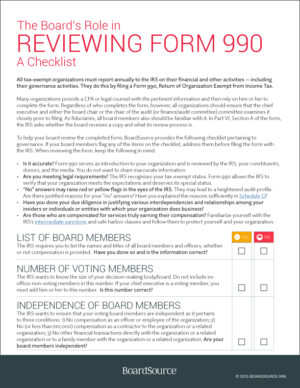
The board’s role in reviewing the Form 990
What is the board’s role?
In Part VI, Section A of the Form 990, the IRS asks whether the board receives a copy and what its review process is. To help your board review the completed form, download this checklist pertaining to governance. The form outlines key areas your nonprofit should address, such as:
• compensation of board members
• mission and programs
• delegation of authority
5 steps to solving thorny, unpredictable problems
“Wicked” problems such as the pandemic affect larger society, are unpredictable and require leaders who can clearly see the root problem, are willing to think through alternative solutions and are quick to pivot, write INSEAD professors Natalia Karelaia and Ludo Van der Heyden, citing their research. “The ability to hold oneself responsible in front of people, particularly in defeat, is the hallmark of great leaders,” they write.
Full Story: INSEAD Knowledge (10/13)
Many nonprofits unsure about 2021 fundraising events
Forty-eight percent of almost 100 nonprofits surveyed by the Peer-to-Peer Professional Forum are unsure whether they’ll host in-person fundraising events next spring. Many organizations that have made a decision are planning virtual or hybrid events, the survey found.
Full Story: Forbes
News and Notes as of October 1, 2020
4 steps for teams to envision and reach their goals
Gabriele Oettingen’s concept of “mental contrasting” can be applied to setting and achieving goals in a four-step process: clarifying your wish, outlining the desired outcome, identifying obstacles and planning how you’ll overcome them, writes Alaina Love. “Best of all, investing just five minutes of daily uninterrupted quiet time to practice the WOOP steps can up your game significantly,” she writes.
Full Story: SmartBrief/Leadership (9/28)
Giving circles empower donors to act fast
The pandemic has shed new light on giving circles and their ability to mobilize donors to make fast, informed and effective decisions, writes Alyssa Wright. “As donors from different philanthropic communities move resources to support pandemic-related issues, many are beginning to cite that having been a part of giving circle prior to Covid-19 allowed them to make faster, better decisions when compelled to give,” she writes.
Full Story: Forbes (9/23)
Why email is the wrong way to convey your feelings
Use video presentations when you want to express deep, important emotions to others, but make a phone call when you’re feeling ambiguous, writes Carmine Gallo, citing research from the University of Texas at Austin. Email, the study found, was the worst way to communicate emotions because people felt it was inauthentic.
Full Story: Inc. (8/21)
News and Notes as of September 1, 2020
As of September 1, 2020
Report: Giving during pandemic outpaces other disasters
The philanthropic sector has received more than $11.9 billion in donations since the start of the pandemic — significantly surpassing the relief funds raised after hurricanes Harvey, Irma and Maria and other disasters, according to the Center for Disaster Philanthropy and Candid. “The economic, social and health impacts of the pandemic will outpace every donated dollar unless we support the most vulnerable among us,” says Center for Disaster Philanthropy Vice President Regine Webster.
Full Story: Wealth Professional (Canada) (8/27)
Coalition debuts road map for foundation mergers
The Council on Foundations has shared a four-step process to help foundations to more effectively handle mergers and acquisitions. A 23-page report outlines the road map process, offers four case studies and explains the steps, including due diligence, integration and communication.
Full Story: The NonProfit Times (Morris Plains, N.J.) (8/24)
The Organizational Budget Effect on Grantseeking
by Ellen Mowrer
With over 3,250 respondents to the 2020 State of Grantseeking™ Survey, our results can help you plan your grantseeking strategy and measure your organization’s success. Year after year, we find that an organization’s annual budget has the greatest impact on the grantseeking experience because it speaks to the size of the organization’s staff, programs, and the scope of service area. While this is stating the obvious, respondents tell us that well-meaning stakeholders regularly suggest more grant opportunities than there are staff to process, as well as poorly matched grant opportunities. It is not an easy balance.
We have found two very important and exciting books authored or edited by leading professor and nonprofit expert, Dennis R Young. These might not be classified as everyday reading on a fundraiser’s shelf, so we wanted to alert you to the following two volumes−which not only you but also your administration and board members would appreciate.
These two books show how economics contribute to better managerial decisions on social matters.
Handbook of Research on Nonprofit Economics and Management
Top researchers in the field review the role, structure, and behavior of private, nonprofit organizations as economic units and their participation in markets and systems of public service delivery.
This book is a valuable resource for academics, but the concerns of nonprofit sector managers and decision-makers are also addressed, making it a useful reference for practitioners as well.
Economics for Nonprofit Managers and Social Entrepreneurs
A pioneering textbook for nonprofit and social managers, this second edition adds risk analysis, game theory, and behavioral economics to the managerial tool kit, along with analysis at the margin, opportunity cost, elasticity of demand and supply, market power, and cost-benefit analysis, with numerous timely examples.
Both vastly interesting volumes can be found on Amazon.com. If you can’t afford to buy one or both, perhaps we can lend them to you.
Career information for fundraising professionals and practitioners
News and Notes as of January 1, 2021
Top fundraising trends to capitalize on in 2021 Prediction 1: virtual fundraising is here to stay. Read more Report: Giving…
News and Notes as of December 1, 2020
Opinion: Nonprofit partnerships empower sector Nonprofits have worked together to share resources and meet the needs of their communities during…
News and Notes as of November 1, 2020
5 Phases of Strategic Planning Strategic planning often unfolds in a series of five phases, with each phase building on…
News and Notes as of October 1, 2020
4 steps for teams to envision and reach their goals Gabriele Oettingen's concept of "mental contrasting" can be applied to…
News and Notes as of September 1, 2020
As of September 1, 2020 Report: Giving during pandemic outpaces other disastersThe philanthropic sector has received more than $11.9 billion…
As of August 1, 2020
How to engage nonprofit boards in fundraising Nonprofits can encourage fundraising at the board level by setting clear expectations with…
News and Notes – as of March 2, 2020
PSI has prepared two documents about fundraising strategies that may be of interest to you. One is a summary of…
News and Notes – As of Februry 3, 2020
As of February 3, 2020 We are already in February and many of us have been battling the elements—blizzards, rainstorms,…
News and Notes – As of January 6, 2020
Happy New Year! We hope you had a well-deserved break and ended the year in high spirits! A useful article was…
News and Notes – As of December 1, 2019
December is here, and it’s a good time to think about year-end giving, legacy/planned gifts, and many kinds of celebrations.…
News and Notes as of October 1, 2019
Online giving is always of interest to fundraisers and it’s an ever-changing scene. Some mixed results were described in an…

